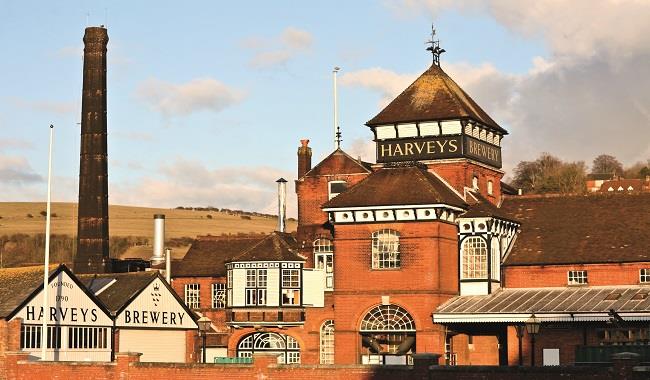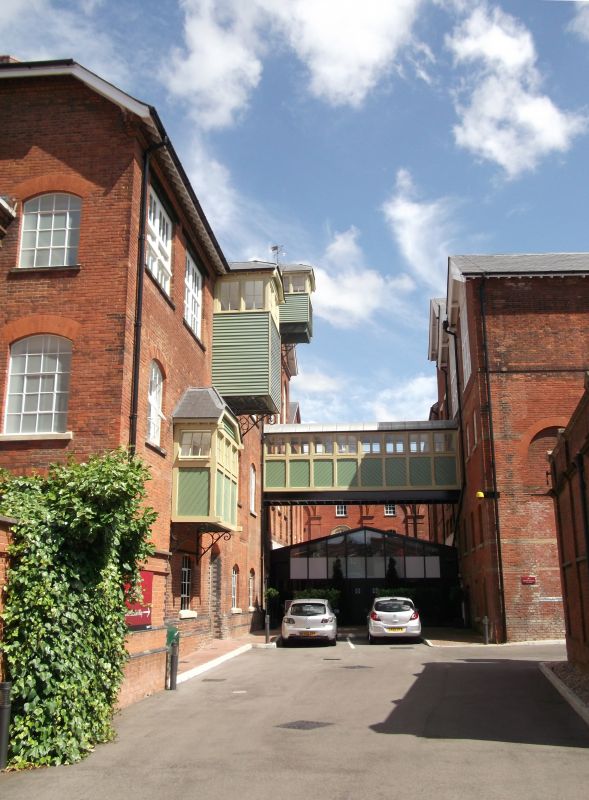This is something I wrote for issue three of an excellent new drinks magazine called Tonic. I’d highly recommend subscribing and they are offering a 20% discount for new subscribers with the code HWOB20. Go to Tonic’s website.
There are three smells I associate with Faversham, the East Kent town where I live. One is the mouth-watering smell of the fish and chip shops. There are two near our house and the air is always thick with the smell of fried potatoes and malt vinegar. Then there’s the creek, the waterway that links Faversham with the sea. At high tide you can smell oyster shells and seaweed, whereas on hot days when it goes out there are less pleasant estuarial smells. Finally, there’s the Shepherd Neame brewery that sits in the heart of town which makes the whole place smell like freshly-baked digestive biscuits.
During the first stage of 2020’s Covid crisis, the first smell disappeared. No more chips and vinegar. But the creek kept going in and out, and I thought to myself, as long as the brewery continued brewing, then everything would be ok. While the world got increasingly creepy, with masked people on streets, warnings on television, and police going through groceries, that smell kept me sane.
According to Jonathan Neame, Shepherd Neame CEO, it was a close-run thing keeping the brewery going when the first lockdown restrictions bit in March. “If we had not, it may not have opened again,” he said. The current family business has been there since 1698 though records have been found showing brewing on the site much earlier.

The architecture of Faversham is dominated by brewing. There’s the sprawling Shepherd Neame site (above), a mixture of Victorian and modern, that sits by the creek. In the old days, malt and hops for the brewery would arrive by boat until the coming of the railway in 1858. Then there are the grand townhouses which were built by Faverham’s beer barons.
The Shepherds and Neames weren’t the only brewing families. Their great rivals, the Rigdens, built a stunning Italianate redbrick brewery opposite Shepherd Neame in the late 19th century. It was sold to Fremlins of Maidstone in 1948 whose elephant symbol you still see at the Elephant pub, before moving into the hands of Whitbread which finally closed it in 1990.
Thankfully, it wasn’t demolished and the massive building now houses a supermarket and various flats and offices. Still, how magnificent would it have been when both were going strong? Imagine the smells. I’m grateful that Shepherd Neame is still there. It was a large part of why we moved here from London. Well, it was for me, my wife was more interested in the quality of the schools.
Having a old brewery at the heart of a town gives a grandeur, purpose, and identity to the place. Southwold would just be another chi chi Suffolk seaside town without the Adnams brewery. Most dramatic of all is Harveys of Lewes (below) whose gothic revival brewery towers over the Sussex market town. Like railway stations, the Victorians built breweries in the style of cathedrals or castles. When the brewing stops, these beautiful old buildings can be repurposed, like Rigden’s in Faversham, but they have lost their magic, and become like a railway station where trains don’t stop anymore or a deconsecrated church.

At one time every town of any size would have had at least one brewery. My father still speaks fondly about the old Benskins brewery in his hometown of Watford which was founded in 1722, and, after being acquired by Ind Coope, was finally shut down in 1972.
It’s a story that’s repeated all over the country. The British beer industry went through a wave of consolidations which increased after the Second World War. Old breweries were closed and their much-loved beers either disappeared or were brewed elsewhere. Today, Watford is a slightly soulless commuter town; one of those places where it feels like the action is always going on elsewhere. How much better would it be with a brewery sitting at the heart of it?
The closure that still brings a tear to my eye is that of Young’s in Wandsworth. Right up until it closed in 2006, dray horses would deliver the beer to local pubs in south west. But hard-headed economics won out and Young’s merged with Charles Wells, and moved brewing out to Bedford. Was it my imagination or did a pint of Young’s Special, my favourite London beer, not taste as good anymore? Since then the family has sold its stake in Charles Wells so no longer have any connection to brewing. Seeing that Young’s sign outside a pub used to bring a feeling of being connected to a rich beer heritage. Now it’s really no different to All Bar One.
Still, you can hardly blame the Young family, sitting on a real estate goldmine as they were. It proved more profitable for many old firms to go into property or concentrate on hospitality then continue with the difficult business of making beer. Whitbread, once one of the country’s greatest brewers, with its famous Chiswell Street site in the City of London, divested itself of its breweries in 2001. The company’s best known asset is now Costa Coffee.

At one point, the constant consolidations in the British beer industry were severely limiting consumer choice. Beers as famous as Bass were passed around companies, unloved, until, now in the hands of AB-InBev, producers of Budweriser, it has all but disappeared. Today, however, with the craft boom, there’s plenty of great beer to enjoy. I won’t turn down a pint of Gadd’s no 4 or Wimbledon American Pale Ale but these operations tend to be based in industrial estates on the outskirts of town. Nothing wrong with that but nobody is going to build a beautiful red brick Victorian-style brewery in a town centre anymore.
As Jonathan Neame put it: “there’s no rationale for having a brewery in the centre of town.” To be an independent regional brewer like Shepherd Neame, you need a fair dollop of romance alongside a hard-nosed business brain.
It’s hardly the most sexy of companies, with its slightly dowdy range of Kentish ales like Masterbrew and Spitfire though the strong dark beers like Double Stout or 1798 ale are superb.The brewery also brews contract beers like Sam Adamuel Boston lager and Oranjeboom.
But isn’t really about beer, it’s about the community. As Jonathan Neame put it: “There’s no rhyme and reason why Shepherd Neame exists. We’re not the biggest, we’re not even the best. There’s just lots of pride.” The firm is a big employer in the region directly or indirectly by using local produce like Kentish hops. Neame compares people’s relationship with the brewery as like that to a town’s football club.
With its pub chain out of action during the pandemic, Shepherd Neame had to find new outlets for its beer like Russia and Australia. A friend even spotted a bottle of its IPA in a supermarket in Guadalajara, Mexico. Still, the company was losing £150,000 a day and had to refinance. Jonathan Neame described the British government’s erratic approach to Covid as “top drawer bollocks.”
But it seems that the company has pulled through and Neame has big plans to rejuvenate its image; “we’ve been doing this for 400 years by continually reinventing ourselves,” he said. Here’s to another 400 years of filling the town with the heady smell of brewing. Which reminds me, I could really do with a pint. And maybe we’ll get some chips on the way home.
—————————-
Sadly, Johnny Homer from Shepherd Neame who showed be around the brewery and was so much help with this article died in July 2021. I want to thank him for all his help and offer my condolences to his wife and daughter.
